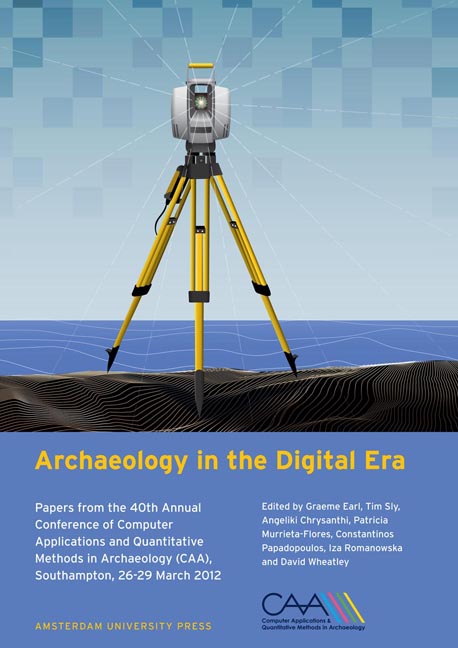 Archaeology in the Digital Era
Archaeology in the Digital Era Obscura Itinera: a GIS-based Approach to Understand the pre-Roman and Roman Transhumance Pathways in Umbria and Sabina Regions (Central Italy)
Published online by Cambridge University Press: 16 February 2021
Summary
Abstract:
This paper presents two different methods (topographic and GIS based analysis) applied by the authors to recognize the layout of transhumance pathways in Umbria and Sabina regions (Central Italy) and to investigate the spatial correlation between pre-Roman ‘casteUieri’ (Italic hillforts) and transhumance routes.
Keywords:
Roman Centuriation, Transhumance, Pre-Roman Hillforts, Cost Distance, Umbria and Sabina
Introduction
Horizontal transhumance is the seasonal migration of people with their domestic livestock between fixed summer and winterpastures, in Italy's south-central regions from the higher /Apennines mountains to the southern lower valleys in Puglia region (Fig. 1).
Here the transhumance pathways, the so- called ‘tratturi’ in modern Italian language (and their branches, ‘tratturelli’ or ‘bracci’), are a kind of very long ‘green highways’ with a considerable width, sometimes up to 100 mt, a strip of land not cultivated but left as enclosed tracts of pastures to allow the sustenance of the flocks during the long distance journey (Fig. 2).
The most significant examples of these pathways are documented between ¿Abruzzo and Puglia regions where this traditional practice has shaped the landscape by being practiced up to modern time since Late Antiquity and Middle Ages with similar under lying procedures for taking advantage of remote seasonal pastures (Fig. 3).
This network of pathways lasted until modem times almost intact in south Italy, as if it had been crystallized in the landscape, thanks to Alfonso Vof Ar agon a, king of Naples in 1442, who established in 1447 a new laws (the so-called Prammatica Aragonese) to regulate the transhumance of the Kingdom of Naples (Gabba & Clementi 1990).
Unfort un ately the r est of the It alian peninsul a, such as Papal States in Umbria and Sabina regions north of the border with the Kingdom of Naples, has undergone a different fate: the lack of a medieval legislation to regulate the‘tratturi’ network caused their disappearance at the end of the Roman period and today they are barely recognizable in the landscape (e.g. in Umbria Spada 2002).
- Type
- Chapter
- Information
- Archaeology in the Digital EraPapers from the 40th Annual Conference of Computer Applications and Quantitative Methods in Archaeology (CAA), Southampton, 26-29 March 2012, pp. 332 - 339Publisher: Amsterdam University PressPrint publication year: 2014


